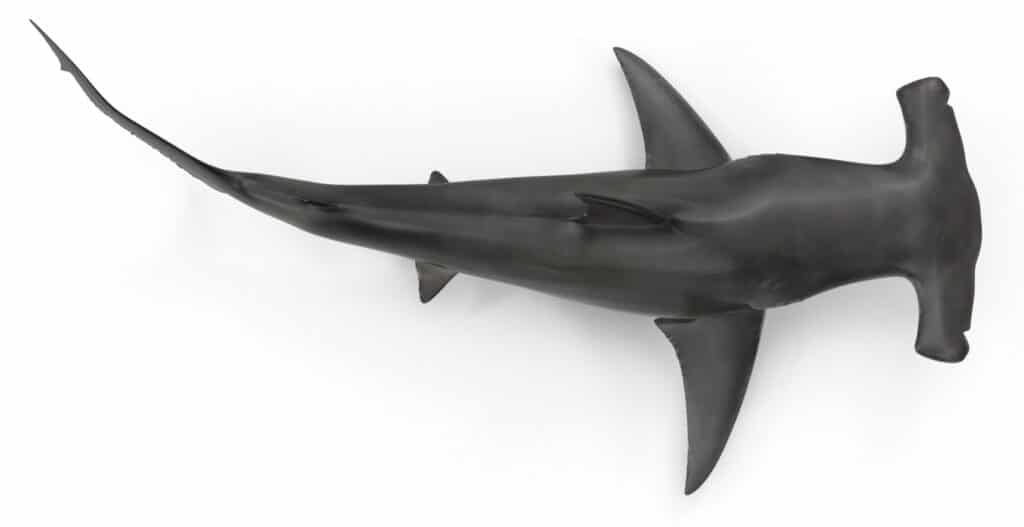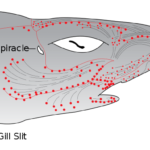Hammerhead Shark Evolution
The early ancestors of sharks first arrived on the scene over 450 million years ago, well before the dinosaurs. Modern day shark species first showed up 370 million years ago. They all had streamlined bodies, between 5 – 7 gill slits, and large dorsal and pectoral fins. They all shared the classic shark appearance that we’re used to seeing today. But, just around 20 million years ago, something unusual happened in shark evolution. Unlike the classic and streamlined super predators, the hammerhead shark arrived with a completely unique shape. This awesome video gives some insight into the evolutionary advantage of the hammerhead sharks unique “cephalofoil”.
I definitely encourage you to watch the video, but here are some of the important points made:
- The hammerhead’s large head actually provides better depth perception than other sharks have. In fact, of all the species of hammerheads, the winghead shark (which has the largest cephalofoil) has the best binocular depth perception
- Scientists had assumed that the large head acted like the wing of a plane and provided lift. But research shows this is not the case. It does, however, provide greater maneuverability than most sharks have. This helps them capture their target prey, rays and crabs.
- The large cephalofoil provides a greater area for the shark’s ampullae of lorenzini, the gel-filled pores on the snout that work like an electrical detector to find the tiny electrical signals made by all living things.

Interested in learning more about shark’s senses? We have a few great articles on our blog worth checking out:
No posts
Looking for some more scientific reading about the hammerhead sharks? Check out A hydrodynamics assessment of the hammerhead shark cephalofoil




